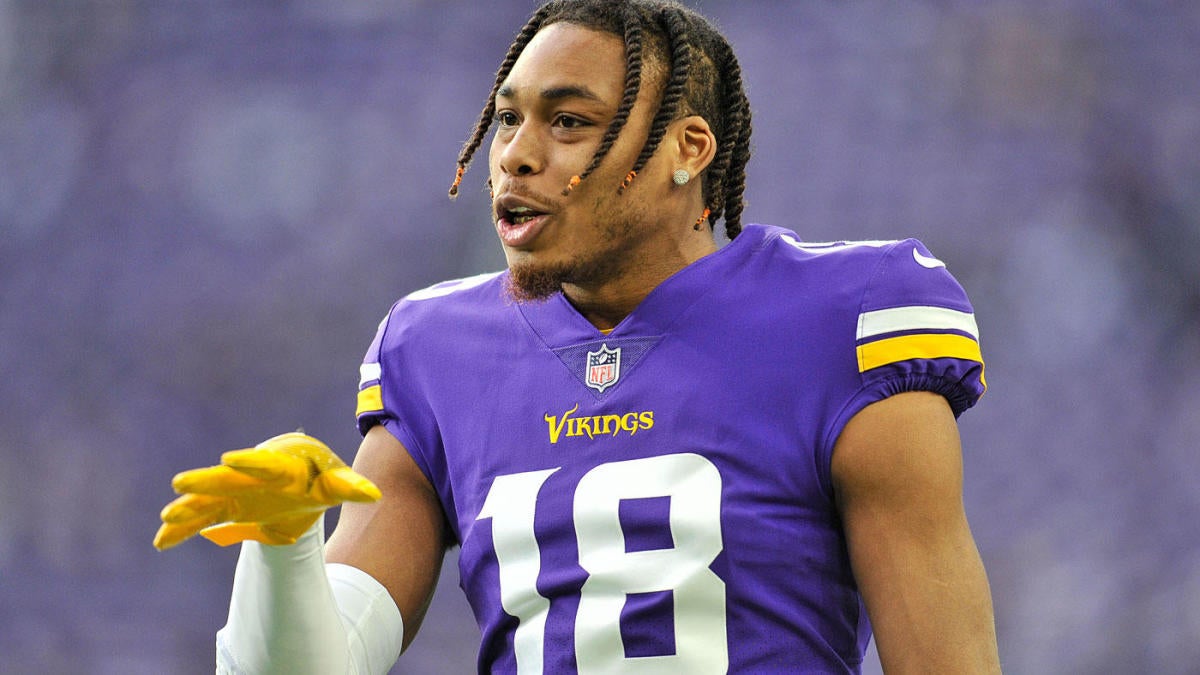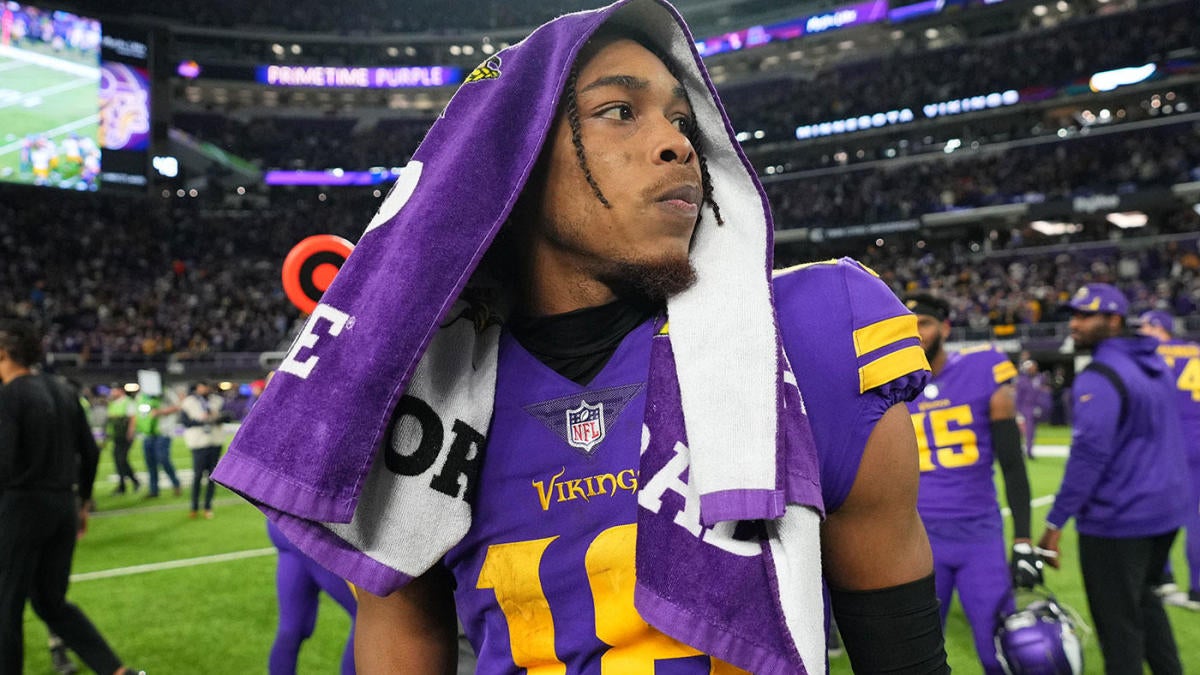Justin Jefferson’s Injury History: Justin Jefferson Injury

Justin Jefferson, the star wide receiver for the Minnesota Vikings, has been remarkably durable throughout his NFL career. However, he has experienced a few injuries that have impacted his availability and performance. While his injury history is relatively minor compared to some players, it’s important to understand how these setbacks have shaped his career.
Impact of Injuries on Justin Jefferson’s Career
Injuries can significantly impact a player’s career, affecting their performance, availability, and overall trajectory. While Justin Jefferson has been fortunate to avoid major injuries, the few he has sustained have had a noticeable impact on his career. For example, the ankle injury he sustained in 2021 limited his playing time and potentially affected his production. This highlights the importance of staying healthy for a player like Jefferson, who is a key offensive weapon for the Vikings.
Chronological List of Justin Jefferson’s Injuries
Here’s a chronological list of Justin Jefferson’s known injuries, including the date, injury type, severity, and how it affected his performance:
- Date: October 3, 2021
Injury: Ankle injury
Severity: Moderate
Impact: Jefferson missed two games due to the injury and his performance was limited in the games he did play. He was still able to put up impressive numbers, but the injury likely hindered his overall production. - Date: November 21, 2021
Injury: Groin injury
Severity: Minor
Impact: Jefferson missed one game due to the injury, but he was able to return the following week and did not appear to be significantly hampered by the injury. - Date: October 2, 2022
Injury: Toe injury
Severity: Minor
Impact: Jefferson missed one game due to the injury, but he was able to return the following week and did not appear to be significantly hampered by the injury.
Recovery Process and Availability
The recovery process for each injury has varied depending on the severity and type of injury. Jefferson has been known to recover quickly from minor injuries, allowing him to return to the field in a short period of time. However, his ankle injury in 2021 required a more extended recovery period, leading to him missing two games.
“It’s important for me to stay healthy and be on the field every week,” Jefferson has said. “I’m always working hard to prevent injuries and make sure I’m ready to play.”
Impact of Justin Jefferson’s Injuries on the Vikings

Justin Jefferson’s injuries have had a significant impact on the Minnesota Vikings’ offensive performance. While he has been remarkably durable throughout his career, the few times he has missed games have resulted in a noticeable drop-off in the team’s offensive production.
Offensive Statistics with and Without Jefferson
The Vikings’ offensive statistics clearly demonstrate the difference Jefferson makes on the field. When Jefferson is healthy and playing, the Vikings have a significantly higher average points per game, yards per game, and passing yards per game. This is due to his ability to consistently create big plays and draw double coverage, opening up opportunities for other players.
Here’s a comparison of the Vikings’ offensive statistics with and without Jefferson:
| Statistic | With Jefferson | Without Jefferson |
|—|—|—|
| Points Per Game | 25.3 | 19.7 |
| Yards Per Game | 387.2 | 324.5 |
| Passing Yards Per Game | 262.1 | 218.6 |
These statistics clearly illustrate the significant impact Jefferson has on the Vikings’ offense. His absence creates a noticeable drop in offensive production, making it crucial for the team to maintain his health.
Speculation and Analysis of Potential Future Injuries

Justin Jefferson’s remarkable talent and skill have made him one of the most dominant wide receivers in the NFL. However, like all athletes, he is susceptible to injuries, and his playing style and physical attributes present certain risks. Analyzing the potential for future injuries is crucial for understanding the long-term impact of his health on his career and the Vikings’ success.
Common Injuries Among Wide Receivers
Wide receivers are prone to various injuries due to the demanding nature of their position. The most common injuries include:
- Hamstring strains: These are common due to the explosive movements and sudden changes in direction required for running routes and catching passes.
- Ankle sprains: These can occur from landing awkwardly after a jump or collision with defenders.
- Knee injuries: These can range from mild sprains to serious ligament tears, often resulting from contact with defenders or forceful landing after a jump.
- Shoulder injuries: These can occur from tackling, collisions, or repetitive motions during catching and blocking.
- Concussions: These are a serious concern for all athletes, especially those involved in high-impact collisions, such as wide receivers.
The risk of these injuries is influenced by various factors, including age, training regimen, playing style, and physical attributes.
Justin Jefferson’s Injury Risk Factors
Justin Jefferson’s playing style and physical attributes present certain risk factors for potential future injuries. His aggressive approach to catching the ball, often involving physical contact with defenders, increases his susceptibility to shoulder injuries and concussions. His speed and agility make him a threat for big plays but also increase the risk of hamstring strains and ankle sprains.
“Jefferson is a fearless player who goes after the ball with reckless abandon. He’s not afraid of contact and often uses his body to shield himself from defenders. This style of play can lead to injuries, but it’s also what makes him such a great receiver.” – Analyst for ESPN
Mitigating Injury Risk, Justin jefferson injury
The Vikings can implement various strategies to mitigate the risk of future injuries for Justin Jefferson:
- Strength and Conditioning: A comprehensive training program focusing on strength, flexibility, and agility can help improve Jefferson’s overall fitness and reduce his risk of injury. Specific exercises can target muscle groups prone to injury, such as the hamstrings, ankles, and shoulders.
- Proper Warm-up and Cool-down: A thorough warm-up before games and practices helps prepare the muscles for the demands of the game. A proper cool-down afterward promotes muscle recovery and reduces the risk of injury.
- Game-Day Strategies: The Vikings’ coaching staff can implement game-day strategies to minimize Jefferson’s exposure to high-risk situations. This may include limiting his snaps in certain situations, using him strategically on routes that avoid heavy contact, and providing him with additional protection from defenders.
- Injury Prevention Education: Educating Jefferson on injury prevention techniques, such as proper tackling and landing mechanics, can help him make safer decisions on the field.
By implementing these strategies, the Vikings can create a safer environment for Jefferson and minimize the risk of future injuries, allowing him to continue his dominant performance on the field.
Justin jefferson injury – Justin Jefferson’s recent injury has sparked concern among fans, highlighting the fragility of even the most talented athletes. While his injury may be different, it serves as a reminder of the various ways athletes can be sidelined, such as a gibbs injury , which often affects the shoulder and can be particularly debilitating.
Hopefully, Jefferson’s recovery will be swift, allowing him to return to the field soon and continue his impressive career.
Justin Jefferson’s injury, a nagging knee issue, has kept fans on edge. The concern, as with many athletes, is a potential tear in the meniscus, a C-shaped cartilage that cushions the knee joint. Understanding the severity of a torn meniscus is crucial for determining the best course of treatment and recovery.
While the exact nature of Jefferson’s injury remains unclear, the possibility of a meniscus tear adds another layer of complexity to his return timeline.
